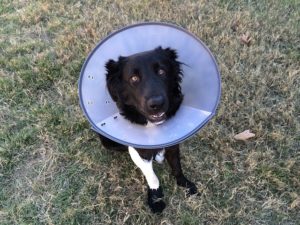
Spaying or neutering your dog is needful for your pet’s health.
Spaying or neutering your dog is one of the common denominators in caring for your pet. If you are looking into owning a pet dog, this surgery should be on your to-do list for keeping your pet healthy earlier on. While it will benefit in the long-run, a first-time dog owner may have many questions. Read on to understand the what, why, when, and how of your dog’s procedure.
What Is Involved?
Spaying applies to female dogs, while neutering applies to males. A veterinarian will remove either the ovaries, the uterus, or both of a female dog. For the male, the vet takes out the testicles. Afterward, your pet will most likely lose certain behaviors, including aggression and breeding instincts. However, some dogs will still retain these traits.
Why Spay or Neuter Your Dog?
The United States receives over 6.5 million animals into shelters annually, and only about half make it into a home each year. With so many unwanted pets, allowing animals to breed even more only adds to the problem. Individually speaking, spaying and neutering prevents the risk of certain cancers and allows your dog to live a longer, healthier life. Especially for male dogs, neutering can reduce the risk of your pet getting into a fight or getting run over by a car.
Timing for Spaying or Neutering
Usually, spaying or neutering your pet occurs when it is at least 6 months old. Various factors affect the timing, like health and circumstances. Larger dog breeds often take a little longer to mature than smaller canines, so their surgery may not happen until they are even a year old. A pet owner must also make sure the dog is healthy before taking it for operation. If you own two dogs of the opposite sex, you may want to get the procedure done sooner.
Caring for Your Dog After Surgery
Like people, animals need rest after surgery. Recovery looks different for each dog, but it usually takes two weeks for your pet to heal completely. Keep your dog indoors during this time, and check on the incision to make sure it is healing. Ways to ensure it is to keep your pet away from other animals and to give your pet the “cone of shame,” also known as an Elizabethan collar. Do not bathe your dog for at least ten days, and call your vet immediately if you see any swelling of the incision or altered behaviors in your pet.
Surgery Risks
The risks for spaying or neutering your dog are minimal, but surgery always comes with risk, such as with anesthesia. However, if your dog is in good health, the chances of something going wrong are less.
Cost
Most veterinary practices charge over $300 for spaying or neutering, but some low-cost options exist as well. Before settling on a price, check out the establishment and also what services are included.
Trust the Care of Your Pet to the Professionals at Everhart Veterinary Medicine!
At Everhart Veterinary Medicine, our veterinary professionals strive to provide your pet with the very best of veterinary care. We believe that the best care for your pet should be provided by experienced, compassionate, and knowledgeable veterinary professionals. With two Maryland locations in both Baltimore and Pasadena, we are always ready to welcome your pet as a new patient! Give us a call today at 410-355-3131 or 410-793-7670! For more information, as well as updates on veterinary news and topics, visit us on Facebook, Twitter, LinkedIn, or Pinterest!
